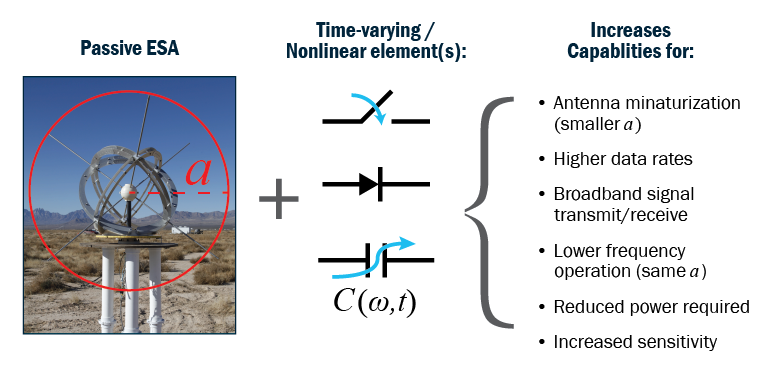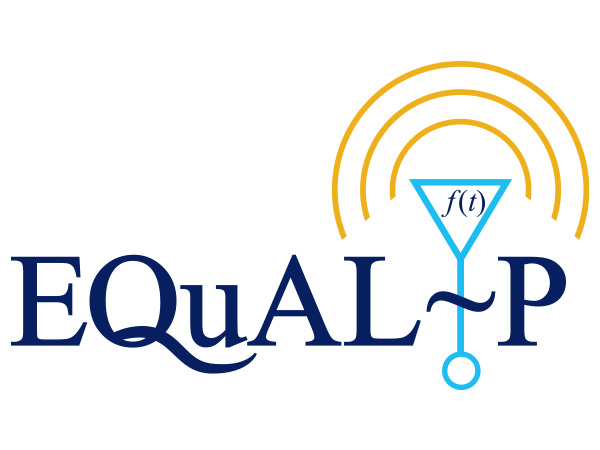Intelligence Value
The EQuAL-P program aims to realize significant gains in the performance of electrically small antennas (ESAs) by activating them with non-linear, time varying elements. Intelligence Community missions often require the use of ESAs where the antenna size is significantly smaller than the wavelength of operation, fundamentally limiting performance.
Summary
To operate over significant distances, radio frequency (RF) communication systems employ wavelengths many meters or even kilometers long, and this imposes proportional size requirements on their antennas. However, most applications desire an antenna smaller than its operational wavelength (i.e., an ESA) but that comes at a performance cost given that ESAs seldom radiate efficiently. The ESA ability to operate at multiple frequencies, handle wideband signals without distortion, and/or support higher data rates also tends to degrade as its size is reduced. As a result, an undesirable tradeoff between performance and size exists in such cases.
Because this tradeoff (known as the “Chu limit”) appears to be immutable, it is unlikely that linear, time-invariant (LTI) ideas will improve the performance of ESAs. However, there is reason to believe that significant performance gains could be realized by pursuing non-LTI (i.e., time-varying) solutions, thereby circumventing the assumptions the Chu limit is based upon. EQuAL-P targets a 10 dB increase in the performance of ESAs in wavelengths ranging from 10 centimeters to 100 meters frequency (i.e., HF, VHF, and UHF bands).
Unlike traditional LTI antennas, measurement techniques for non-LTI antennas are not well established – a gap that EQuAL-P seeks to address. To validate improvements in the performance of non-LTI antenna systems, IARPA will incorporate rigorous side-by-side measurements of LTI antenna systems of known bandwidth and efficiency for comparison. For independent test and evaluation, IARPA is partnering with various DoD labs with extensive measurement capabilities and experience.
The EQuAL-P BAA was released in December 2021 and is slated to run for four years.

Activating ESAs (a < wavelength/4π) with time-varying elements (e.g., switches, diodes, non-linear varactors) may lead to various performance enhancements not possible with traditional LTI ESAs. Shown here is an HF ESA developed as part of IARPA’s HFGeo program.
Proposers' Day Information
EQuAL-P Proposers' Day Teaming Form

